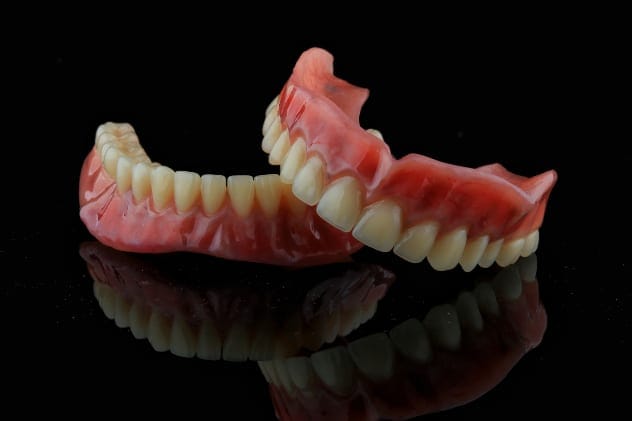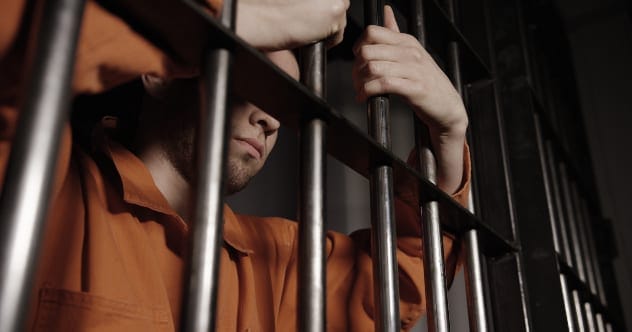Forensic science has come a long way. It used to be about rumors and pointing fingers. Now, it’s a detailed process using DNA, videos, data, and science. One important part is forensic dentistry. While things like bite mark analysis are sometimes debated, other methods like dental DNA, figuring out age from teeth, and identifying victims by their teeth are very useful.
Teeth are super helpful for scientists. The enamel, that shiny white part, is the hardest thing in our bodies – even harder than bone! Criminals might try to hide bodies, but teeth often last. This means they leave behind important clues. It’s no wonder teeth have helped solve crimes many times. Sometimes they’ve helped, and sometimes they’ve made things tricky. Here are ten cases where human teeth made a big difference in criminal investigations.
10. Agrippina and Lollia Paulina’s Golden Grin
This ancient case is often called the first time forensic dentistry was used to identify someone. Some even say it’s the first use of any forensic science! Lollia Paulina and Agrippina the Younger were Roman noblewomen. Agrippina wanted to marry Emperor Claudius, but Lollia was her rival. Agrippina won, married Claudius, but she didn’t forgive Lollia.
Agrippina accused Lollia of witchcraft. Lollia was found guilty, sent away, lost her property, and was ordered to end her own life. A guard brought Lollia’s head to Agrippina as proof. But the head was hard to recognize. Agrippina remembered Lollia had bad teeth, some replaced with gold. By opening the mouth and seeing the gold, Agrippina confirmed it was Lollia. This is seen as the first time teeth helped identify a body.
9. Reverend George Burroughs and the Salem Witch Trials
The Salem Witch Trials in 1692 show a dark side of early American justice. They also show a strange use of teeth in a criminal case. Reverend George Burroughs, along with many others, was accused of witchcraft. People who didn’t like him made up evidence.
One piece of “evidence” was a bite mark on a young victim, supposedly made by Burroughs. They looked at his teeth and compared them to the mark on the victim’s arm. This was enough to get Burroughs convicted and hanged. He was later cleared of all charges, but his trial was the first time in what would become the U.S. that bite evidence was used in a case.
8. Jesse Timmendequas and Megan’s Law
Today, every U.S. state has Megan’s Law. This law makes information about sex offenders, like their names and addresses, public. The law started because of a case involving a young girl named Megan Kanka.
Megan was attacked and murdered by her neighbor, Jesse Timmendequas. Luckily, Timmendequas was caught. A key piece of evidence that helped convict him was a bite mark Megan left on his hand when she bravely fought back. Once again, teeth played a part in creating laws to protect children.
7. Thomas Maupin’s Revealing Dentures

In 2001, a young woman was walking on an empty road in Memphis, Tennessee, when she was attacked. A man stabbed her, raped her, and ran away. Thankfully, she survived and reported the crime. Police collected evidence, but the man wasn’t identified.
Ten years later, a strange piece of evidence was re-examined: a pair of dentures found at the scene. These dentures belonged to the attacker, and he had written his name inside them! This helped police find Thomas Maupin and convict him. It took a long time, but the (fake) teeth helped solve the case.
6. Fredrik Fasting Torgersen: A Questionable Bite

The case of Fredrik Fasting Torgersen from Norway is one of history’s more controversial. It shows that bite mark analysis can sometimes be misleading. Torgersen was convicted of raping and murdering a young girl in 1958. There wasn’t much evidence connecting him to the crime.
A major piece of evidence against him came from an expert who said a bite mark on the victim’s breast “with full certainty pointed to Torgersen.” The use of this bite mark, and bite marks in general, has been questioned since. Torgersen was sentenced to life in prison based mostly on this one piece of evidence. He was released after 16 years. Many people in Norway still protest this case, believing it was an injustice.
5. Ted Bundy’s Incriminating Bite Mark
Ted Bundy is one of history’s most infamous serial killers. He confessed to murdering 30 people in the 1970s and admitted to kidnapping and raping many more. Bundy was smart and didn’t leave much evidence behind.
Building the case against Bundy took years. Though bite mark analysis can be uncertain, it was crucial in his conviction. During one attack, he bit one of his victims on her buttock. Forensic dentists Richard Souviron and Lowell Levine made casts of Bundy’s teeth. They matched them to the bite mark on the victim. This evidence helped to finally stop Bundy’s terrible crimes.
4. Sharon Carr’s Cheesy Teeth Clue
In early 2001, a woman called 911 when she heard an intruder in her house. She was home alone with her two children. The intruder spent some time in the house, then realized it was occupied and fled through a window. When police arrived, the intruder was gone but had left evidence.
This evidence included a water bottle and an empty bag of Cheetos. Police believed the intruder dropped these items while escaping. While searching, police found Sharon Carr hiding in nearby bushes. They knew Carr was the intruder because her teeth were covered in fresh Cheetos dust! A small, strange win for tooth-based evidence.
3. Ray Krone: Wrongfully Convicted by a Bite
Ray Krone’s 1992 murder conviction, earning him the label “Snaggletooth Killer,” is a famous example of mishandled evidence and the unreliability of bite mark analysis. Much like Fredrik Torgersen, there was little evidence against Krone.
An expert witness claimed Krone’s bite pattern matched bites on the victim. However, Krone was later proven innocent through DNA evidence. This DNA also identified the real killer: Kenneth Phillips, a repeat sexual offender. Krone has since worked with the Innocence Project, campaigning against the death penalty, highlighting how new DNA evidence can overturn wrongful convictions.
2. John Wayne Gacy: Identifying the Killer Clown’s Victims
John Wayne Gacy, like Ted Bundy, is one of history’s most notorious serial killers. He was known as the “Killer Clown” for his brutality and the large number of victims. Gacy killed at least 33 young men, often after torturing them.
A major challenge was finding and identifying Gacy’s many victims. Police found twenty-six victims in the crawlspace of his home. Dental records helped identify twenty-three of them. Over the years, more victims have been found, many in the Des Plaines River. Dental DNA has been vital in identifying these individuals, bringing some closure to their families.
1. Josef Mengele: The Angel of Death Identified by His Teeth
Josef Mengele was one of history’s most evil figures. Thanks to his teeth, we know for sure he is dead. As a Nazi SS officer, Mengele conducted cruel medical experiments on prisoners at Auschwitz, earning him the nickname “Angel of Death.” When the Nazis lost World War II, Mengele fled to Argentina to hide.
He lived on the run, moving to Paraguay and then Brazil, using false names. In 1979, he had a stroke while swimming and drowned. After decades of searching, Mengele was found, but as a corpse under a different name. Brazilian and American dentists had to prove his true identity. By comparing X-rays of the skull with records from a Brazilian dentist who had treated Mengele, American dental scientist Lowell J. Levine confirmed the remains were “Josef Mengele with an absolute certainty.” Teeth finally proved the Angel of Death was gone.
These ten cases show the incredible power of forensic dentistry. From ancient Rome to modern times, teeth have provided crucial clues, helped identify victims and perpetrators, and sometimes, highlighted the need for caution in interpreting evidence. The tiny details within our mouths can tell surprisingly big stories.
What do you think about these cases? Do you know any other instances where teeth played a major role in solving a crime? Leave your comment below!










